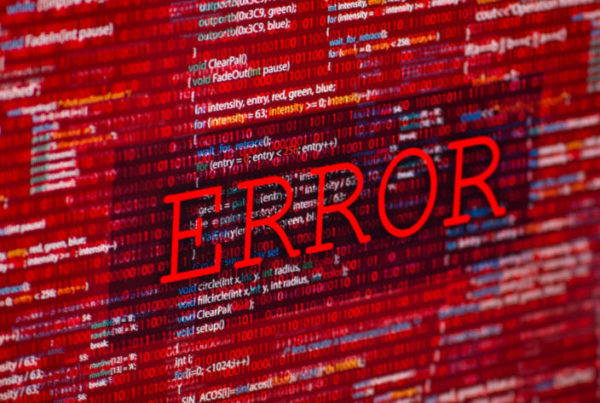Companies tend to view ‘soft’ or ‘touchy feely’ stuff as things that will slow down M&A deals. As I’ll argue in this blog, they could do well to use tactics of managing differences, as found in Alliance/Partnering activities, to build capability together. Otherwise the resulting organisational silos ends up with the organisation missing a trick when trying to preserving deal value post signature.
As I sit here watching winter approach, I’m reflecting on this statistic… “Studies show that 85% of mergers & acquisitions don’t realise their expected value due to integration problems” (Deloitte).
Delving a little further at the figure, almost half of the executives leave in the 1st year, 75% by year 3 and productivity soon drops of a cliff by 50% not soon after the ink drying on the contract!
I’m astounded, but then, not wholly surprised by this as I’ve been on a few deals in my time. M&As aren’t a new thing, businesses have been doing this since businesses were invented. If there is so much inherent business knowledge about how to do (and not) do them, why don’t businesses have more success in addressing this issue? Why is this figure still so high?
But picture this… you’re a deal leader under huge pressure from your senior management to get the deal done quickly. This deal is vitally important and needs to be closed in time for the Quarterly business results and investors meeting. Where do you focus your efforts? It’s got to be on conducting the necessary financial and commercial due diligence, building the business case and getting the contract signed.
Despite the stark data regarding failure rates and the wide recognition for the reasons for this, the last thing on the deal team’s mind is how the actual value of the deal will be delivered and the integration of the new business. For them, this responsibility sits with the business once they hand over (sometimes, throw over the fence) to the business. This may be appropriate as the deal needs to get across the line within very tight times scales and their concern is not execution of the deal… so who is concerned about this? Who should take the responsibility for this?
Robust integration planning, which becomes an insurance policy to retain deal value should be on the leadership teams’ radar and they should be prioritising this as the deal starts to become a reality. What should they be checking before the deal is done?
So we come back to the key drivers of deal value leakage… people. Often the overlooked value factor beyond meeting complying with legal obligations (TUPE, redundancy, salaries, benefits etc). These are the “hygiene” factors that will at least get the integration started. Ensuring that incoming staff are paid on time and their terms are fair will get you over the 1st few months, but the honeymoon doesn’t last long at all.
Talent retention goes beyond pay & benefits – an understanding of how the 2 different cultures will integrate is vital to avoid the well documented brain drain. The clash of cultures is often a driving factor for discord and integration failure. Senior mgt need to consider culture due diligence as important as financial & commercial DD to assure the successful delivery of deal value. Culture integration isn’t something “they’ll work out between them”. Even though you may think the 2 parties have the same culture, there will be differences that need to be managed or removed.
There are examples of deals being cancelled, the acquired company divested soon after and key personnel departing in droves when cultural differences cannot be overcome. I personally have not known a deal cancelled because a culture chasm has been identified and I’d be surprised if a cultural difference will ever influence the signing a deal… what it should do is to inform the integration plan to enable the risks to be mitigated. But this needs to be visible and understood BEFORE the deal is signed.
So, what do companies need to do differently? In my opinion, there’s been some great work done on the alliance & partnering front to equip alliance leaders with the skills & tools to assess and manage the differences that exist between 2 partnering companies. Partnerships & alliances are all about effectively managing differences. Differences are great and add a lot of additional value to partnering deals, however they must be managed effectively to avoid them being destructive, eroding value. Culture assessments are a key tool in the alliance leaders’ toolbox, used to identify potential areas of conflict & leverage, whereupon skills development programmes, processes & frameworks can be built to manage those differences. As I reflect on M&A deals – ultimately they are aimed at removing difference to create synergies and integrate the businesses, but they go through a temporary period of partnering. This period can last years and is where, according to the research, most value leakage happens. So why don’t companies set themselves up to temporarily manage this period as if it were an alliance/partnership doing the appropriate due diligence during the deal negotiations to enable effective management of the pseudo partner company through this period? Maybe it is a short sighted view that M&A and alliances/partnerships are different and never the twain shall meet? Maybe it is a symptom of the functional silos that exists in companies. But I come back to the leadership groups role in all this – they have a broader cross-company view and have the power to change how the deal process is done.
If the leadership group supported the engagement of experts from across the business, experienced in conducting partnering due diligence and alliance management, then conducting a cultural due diligence in parallel to the deal team building the business case and negotiating the agreement (and so not getting holding up the deal process) would result in cultural due diligence being part of the business case and incorporated into the plan for the integration phase.
So, how do you conduct a cultural due diligence? A common approach is to conduct interviews, asking specific questions that will give enable you to get insights into that company’s culture e.g. decision making, attitude to risk, rules & processes, daily routines. You should ask the same of your own people in order to analyse the results and identify any key gaps that may require further investigation. These insights can be augmented with any current experience of working with that company and market research (e. media reports etc)
But what if you can’t get access to the other company’s staff? This is a common challenge given the legal environment and restriction of each party to information. In these circumstances, interviewing the deal team and functional representatives who will be interacting with staff of the other company as they conduct their due diligence activities will give you some insights (albeit 2nd hand) – but some information is better than none and a picture can be built.
So, if this is an area that you are also passionate about, would like some help with addressing or just want to discuss further, then please get in touch.




